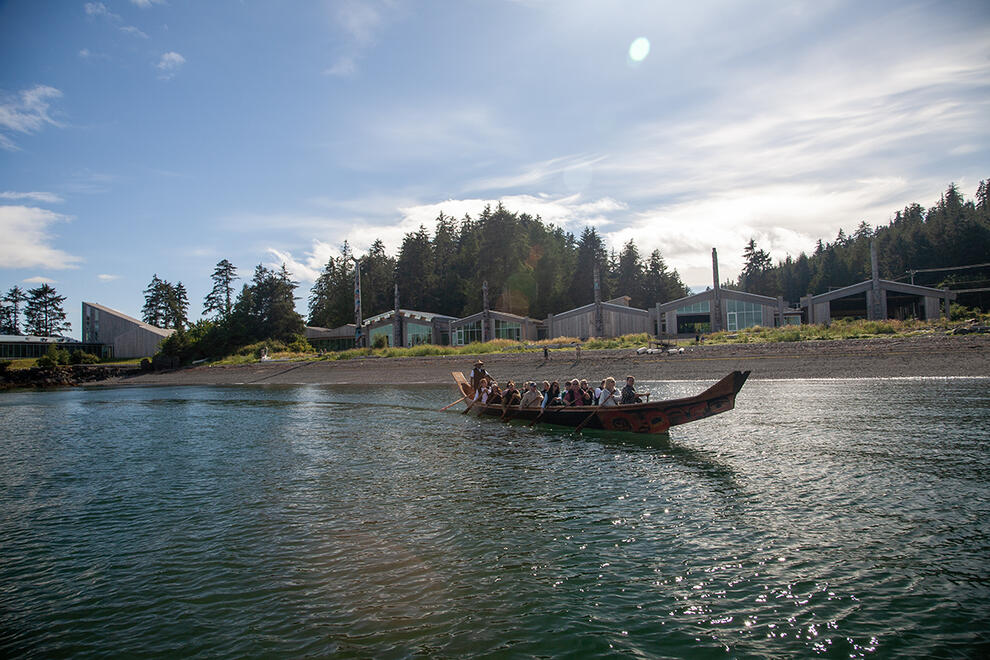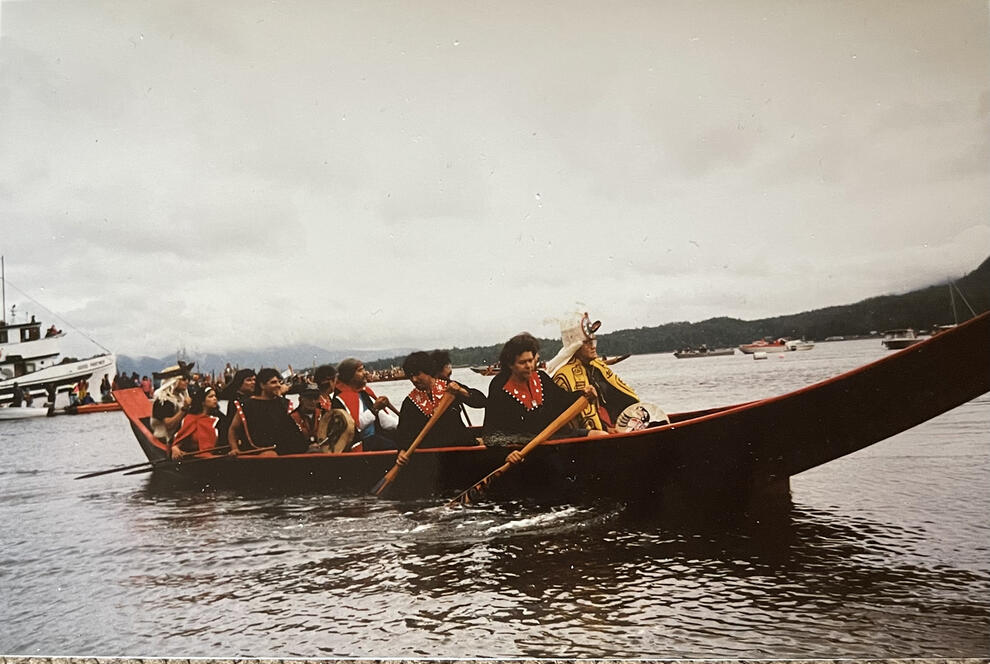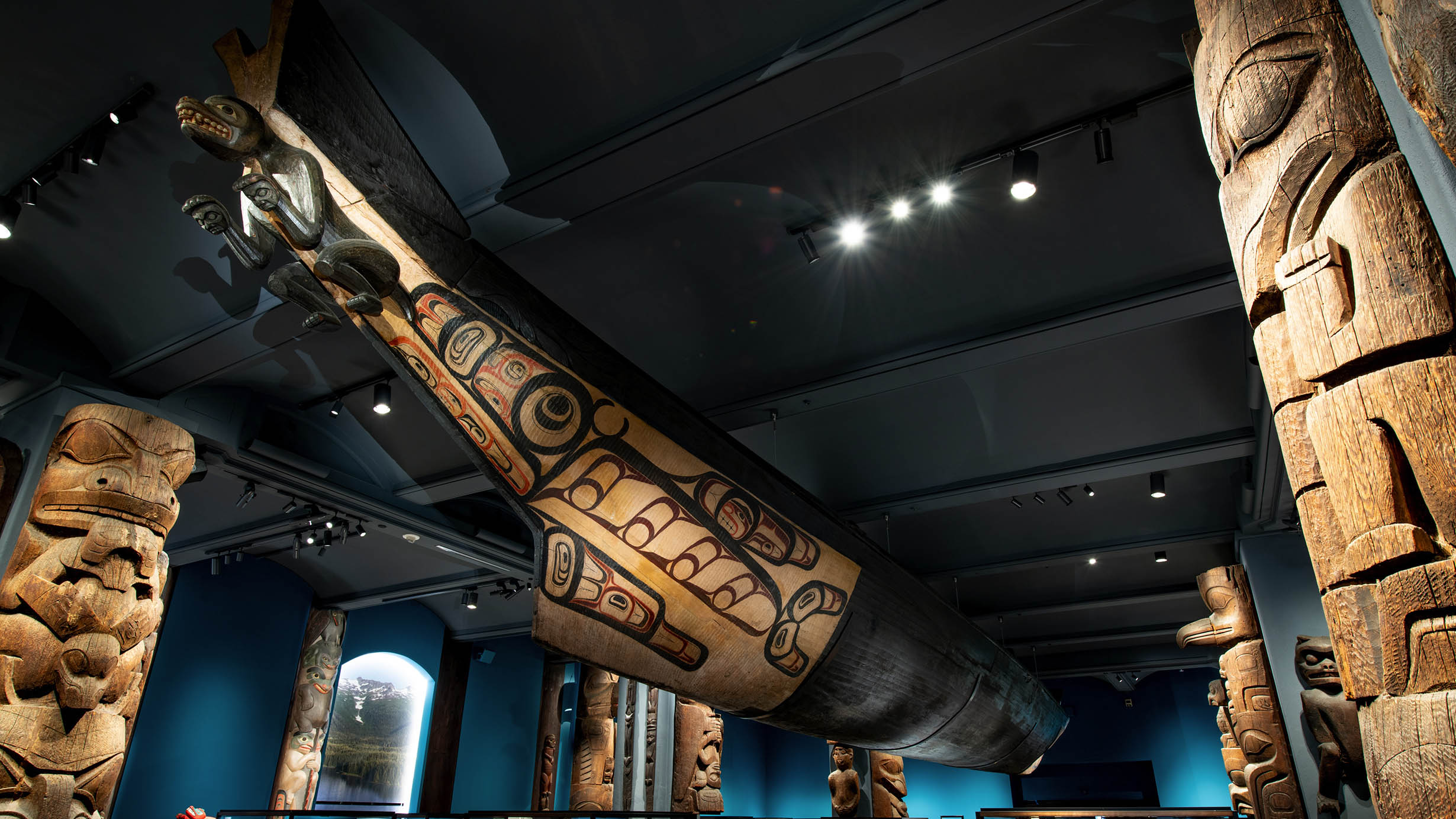Great Canoe
Part of Northwest Coast Hall.
 Denis Finnin/© AMNH
Denis Finnin/© AMNH The largest sea-going canoe of its kind remaining in the world, the Great Canoe’s hull is carved from one huge western red cedar tree. The canoe was designed to carry dozens of people and their belongings on the open ocean, propelled by paddles or sails of woven cedar bark. On the Northwest Coast, vessels like this one were frequently traded between Nations and included in marriage dowries.
View the Living with Sea exhibition in the rotating art gallery in the Northwest Coast Hall.
When canoes changed hands, new owners often added their own design elements. The painting and carving on this 63-foot (19 m) canoe are the work of both Haíłzaqv and Haida artists. A Northern canoe isn’t finished until it has a prow and stern, seats, and perhaps a personalized design. These vessels also have names, although the name of this canoe has been lost.
Click on the + signs below to find out more about design elements of the Great Canoe.
gḷ̓w̓a - canoe, in Haíłzaqvḷa
tluu - canoe, in X̱aayda Kil (Haida)
Sails For Traveling
Library of Congress
Northwest Coast Nations are shaped by their relationships to the sea. Large canoes like the Great Canoe can travel long distances, propelled by paddles and sails. In earlier times, navigators carried repair kits with drills, spruce root, and tree pitch, for cinching cracks together and plugging holes that could develop while traveling.
Northwest Coast Canoes
 The canoe carved by the Haida artist Iljuwas Bill Reid is named Loo Taas, or Wave Eater, for the Killer Whale design on its bow and stern and because it slices easily through large waves. Loo Taas is seen here in front of the Haida Heritage Centre and Haida Gwaii Museum at Kay Llnagaay in 2009.
The canoe carved by the Haida artist Iljuwas Bill Reid is named Loo Taas, or Wave Eater, for the Killer Whale design on its bow and stern and because it slices easily through large waves. Loo Taas is seen here in front of the Haida Heritage Centre and Haida Gwaii Museum at Kay Llnagaay in 2009.Rolf Bettner/Haida Gwaii Museum
 A Haíłzaqv canoe crew, including late Chief Hṃ́zit du Wáuyala (front, in yellow), at Qatuwas, the international canoe gathering in Bella Bella, British Columbia, in 1993. Canoe paddlers include Charles Gladstone, Sr., Dwayne Walkus, James Brown, Danny Windsor, Robert Hall, Marshall Windsor, Irving Brodowich, Richie Windsor, and Frank Brown.
A Haíłzaqv canoe crew, including late Chief Hṃ́zit du Wáuyala (front, in yellow), at Qatuwas, the international canoe gathering in Bella Bella, British Columbia, in 1993. Canoe paddlers include Charles Gladstone, Sr., Dwayne Walkus, James Brown, Danny Windsor, Robert Hall, Marshall Windsor, Irving Brodowich, Richie Windsor, and Frank Brown.Lorena White
